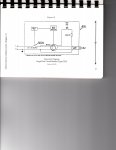Athough the Leviton approach leaves some portion of the electromechnical trip mechanism untested, I think there's a valid argument that it provides some extra margin of safety. With a traditional GFCI if the test button fails to trip it then this could be ignored because the receptacle would still be useable even though the ground fault protection is defective. In the Leviton design, after the test button mechanically trips open the contacts it will not reset and close these contacts if it detects that the GFCI protection circuitry is not functional. In this case there will be no power available from the receptacle and therefore some extra motivation to replace the defective GFCI.






